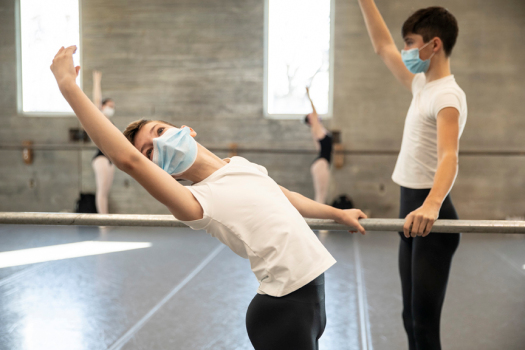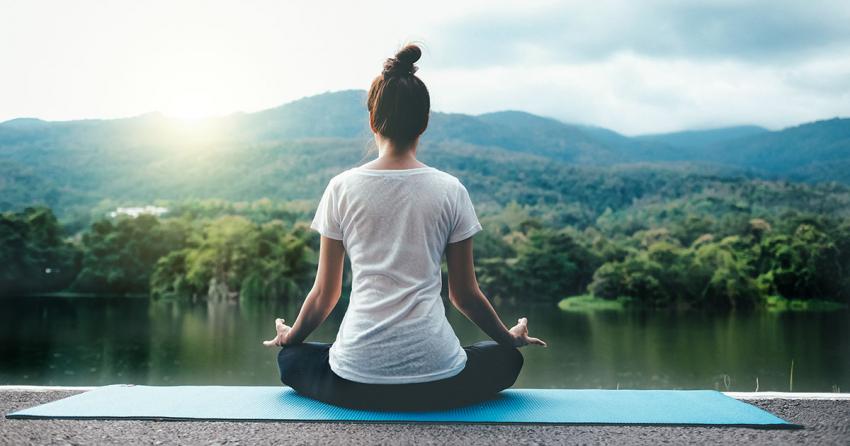Breaking The Barrier: From Collaborator To Soloist


Outside on the streets, masks were worn and people were keeping to different sides of the pavement and opposite sides of the road. If anyone entered a building or left anywhere the lower half of their face would be covered and often remain covered. The mid-spring sunshine was casting a sense of hope on the room that we entered for our first read-through. A grand place, painted blue and pale cream with a beautiful mantelpiece at one end and a stage that had been left untrod for over a year at the other. The members of the cast present had settled around several tables and masks had been removed. A babble of small talk was occurring throughout the room and as people entered in dribs and drabs, more chairs were set up and the gaps between each occupant diminished.
The script was read through; at this point, an anticipatory pause was experienced throughout the room as the full extent of what had just happened at this point reached us all. The voices of several fictional characters from a classic children’s tale had just floated around the room - the brave, the affectionate, the foolish and the wise. Serotonin levels were rising and hearts were beating as we all felt the weight of this beautiful feeling once again. The buzz at the prospect of a new show, a new project and new people to work with and watch.
It is incredibly surreal and pretty cathartic to return to a place that has provided so much fulfilment, interaction and memories. After so long without the comfort of physical contact, being able to see the smiles on people’s faces and the constant worry of standing so close to one another, these all faded along with the trials of the everyday world. Fuelled with the energy of each other, we no longer had to fight to regain our reactive energies as being present in the space together felt like enough.
As an artist stuck in the same cyclical structure day after day with no other energy source to bounce off of it can be quite a change to return to and also a challenge. Without other ideas, creativity and motivation can begin to flag and so can energy levels. In particular, the absence of intimacy with others, whether through vocalising shared experiences or through physical contact will be a significant pull on any creative piece. Moreover, this absence will draw our attention towards the emotions drawn out from these collective journeys and replaced by a hollowness. Cancelled performances or months of preparation that now feels like wasted effort is devastating and it is natural to lack the mental and physical energy to continue creating.
Here are a few steps to take to take care of oneself during this uncertainty and stress:
- Keep regular contact with people. The people you have been creating with will provide you with an image of yourself that has made you feel more capable and driven your belief in your creativity. These are the people you need to regularly be in contact with. Set up weekly meetings - work out which ones will be focused on brainstorming ideas and which ones will be a general catch-up and checking in with each other. Both are equally important; it should be a collective effort to coordinate these meetings. Nobody should feel as though they are placed with the bulk of the leadership responsibility and everyone should be helping out in order to maintain good mental health.
- Play some music. And play it hard! Ramp the volume up, sing along to your favourite tracks and try crazy-dancing to release the frustration if it gets too much. Taking yourself outside for a walk with the sound pumping in your ears can help - being active will drown out some of the stress and help to focus on feeling calm and in control.
- Pick up a new skill. Something that will be greatly missing when dealing with the transition from creative collaborator to solo artist is the excitement that a new discovery or exploration will bring and the discussions that will often stem from these, often endless. When approaching something alone for the first time, it is very easy to meet certain invisible barriers that will feel difficult to overcome when working in isolation. It is important to keep the creative energies flowing but it may be time to think beyond your particular artistic niche. If you are a performer, try expressing yourself on paper. Used to communicating through drawing and painting, why not focus on using your body creatively. It can be exciting, therapeutic and strange to try something completely new. This is where a confrontation with yourself and your identity comes into the mix; it is important to make small changes and keep things interesting in your life. Times like this, where your creativity is already stifled enough, requires bolder ideas, stronger trust in yourself and your skills and the willingness to adapt. So, ignore those feelings of hesitation and inadequacy that will crop up when approaching something new for the first time; focus on the wonderful feeling of discovery.
- Keep a loose structure to your day. Even if this is not your style (often the case for us creatives), a basic structure to your everyday life can make a huge difference to your mindset and progress. It could be as simple as setting aside five minutes in the morning for stretches, a thirty seconds of power posing, a quick burst of simple and effective exercises, taking the first hour of your day to properly hydrate, prepare and enjoy a nutritious breakfast. Positive manifestations will do you the world of good first thing in the morning as well. The perfect remedy to loneliness and the creative mind block. It is also worth considering how you could end your day in a positive way, as something to look forward to, to motivate yourself and to show yourself compassion.
-
Try a different setting. Sometimes it could simply be that you are in the wrong place for the specific present focus. If performing a scene or perfecting a devised piece works better outside, find somewhere nearby that will offer the inspiration you are lacking but the same amount of privacy. Strangely, working with physical limitations can generate a lot more stimulation than you would think and it is worth considering any really small spaces you still have access to. What could you do with them? How could normal everyday objects be used for props or create the atmosphere for a perfect shot? Think about bringing out the beauty of the ordinary.
- KEEP GOING AND KEEP CREATING!